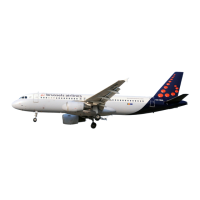
Do you have a question about the Airbus A320-214 and is the answer not in the manual?
| Manufacturer | Airbus |
|---|---|
| Model | A320-214 |
| Maximum Seating | 180 |
| Length | 37.57 m (123 ft 3 in) |
| Height | 11.76 m (38 ft 7 in) |
| Cabin Width | 3.70 m (12 ft 2 in) |
| Maximum Fuel Capacity | 24, 210 l (6, 400 US gal) |
| Service Ceiling | 12, 000 m (39, 000 ft) |
| Seating Capacity | 150-180 (typical) |
| Cruise Speed | Mach 0.78 (828 km/h, 514 mph, 447 kn) at 11, 000 m (36, 000 ft) |
| Engines | CFM International CFM56-5B |
| Maximum Landing Weight (MLW) | 66, 000 kg (145, 500 lb) |
| Maximum Zero Fuel Weight (MZFW) | 62, 500 kg (137, 800 lb) |
| Type | Narrow-body airliner |
| Crew | 2 (pilots) |
| Maximum Takeoff Weight (MTOW) | 77, 000 kilograms |
Instructions for setting up the flight, selecting aircraft, route, and starting.
Verifying critical aircraft states before starting takeoff.
Retracting the landing gear after takeoff.
Activating the autopilot system for automated flight.
Reducing thrust to climb thrust when "LVR CLB" flashes.
Retracting flaps and slats once airspeed is sufficient.
Identifying the arrow that indicates the start of descent.
Selecting a lower altitude for the autopilot to begin descent.
Initiating the aircraft's descent when the arrow is close.
Autopilot commands idle thrust and pitches to match speed/altitude targets.
Activating the ILS localizer and glide slope display.
Preparing for the approach into San Francisco.
Arming the autopilot for ILS approach capture.
Setting the auto-brake to the 'LO' position for landing.
Managing aircraft speed during the approach phase.
Decelerating to green dot speed and selecting Flaps 1.
Activating the second autopilot for enhanced control.
Autopilot capturing the localizer needle for lateral guidance.
Setting flaps to the second stage as airspeed decreases.
Extending the landing gear during the approach.
Extending flaps to the final configuration for landing.
Verifying the final checklist for landing.
The autopilot initiating the flare maneuver before touchdown.
Disengaging the autopilot and auto-brake after landing.
Overview of the A320 autopilot simulation.
Explanation of the FCU and its functions.
Engaging the autopilot system using AP1 or AP2 buttons.
Explanation of the Auto-Thrust system and its controls.
How vertical modes affect auto-thrust engagement and control.
Explanation of managed vs. selected modes for autopilot control.
Using the speed knob for managed or selected speed control.
Controlling the aircraft's heading using the heading knob.
Adjusting target altitude using the altitude knob.
Using the vertical speed knob for VS mode.
Using the EXPED button for rapid climbs or descents.
Activating localizer and approach modes for landing.
Switching between speed and Mach reference for control.
Switching between heading/VS and track/FPA modes.
Displaying altitude in meters instead of feet.
Adjusting altitude selector increments between 100 and 1000 feet.
Overview of the Multipurpose Control and Display Unit (MCDU).
Function of the line select keys on the MCDU.
Function of the scratch-pad area on the MCDU.
Steps to create a flight plan using the MCDU.
Sequence for setting up a typical flight plan in the MCDU.
Accessing the A/C Status Page on the MCDU.
Initializing flight parameters like FROM/TO, flight number, cost index.
Configuring departure and arrival information on the MCDU.
Selecting departure airport and runway in the MCDU.
Selecting arrival airport and runway in the MCDU.
Manually adding waypoints to the flight plan.
Tuning radio receivers and setting courses in the MCDU.
Setting up initialization page B for fuel and weight.
Configuring takeoff speeds, flaps, and temperature in the MCDU.
Setting up approach speeds and other parameters in the MCDU.
Entering destination QNH, temperature, wind, and minimums.
Reference table for V-speeds, ranges, and flap limitations.
Specific flap configuration and airspeed for takeoff.
General flap extension and retraction rules in flight.
Table of limit speeds for landing gear operation.
Table of stall speeds based on weight and flap configuration.
Maximum taxi speed limit when takeoff weight is high.
